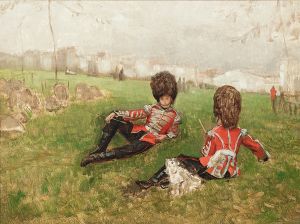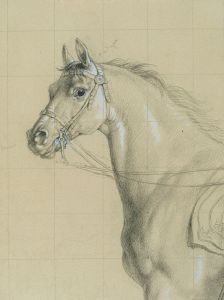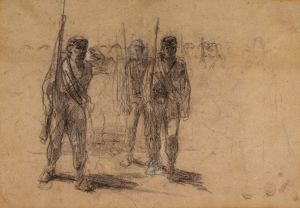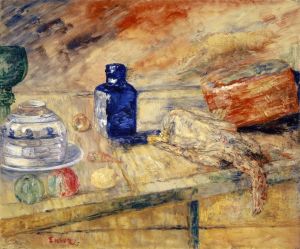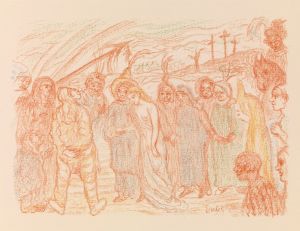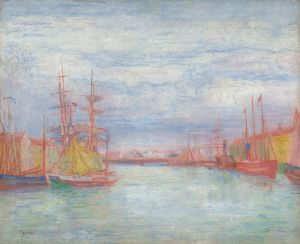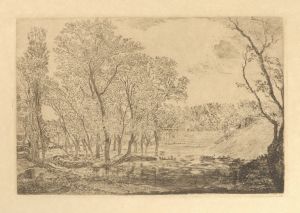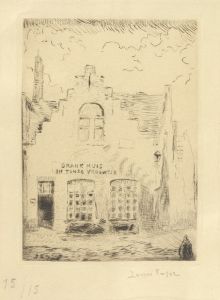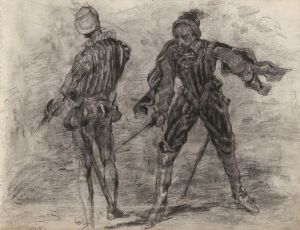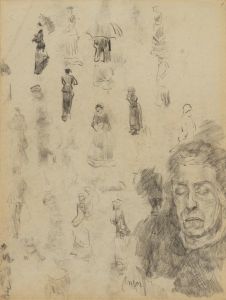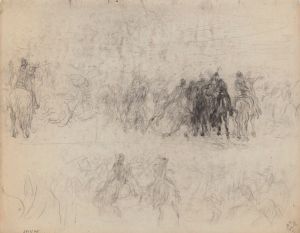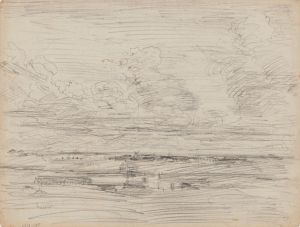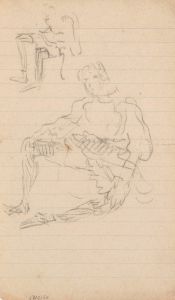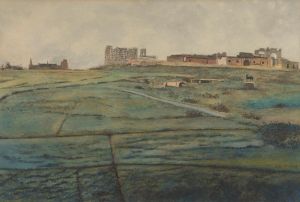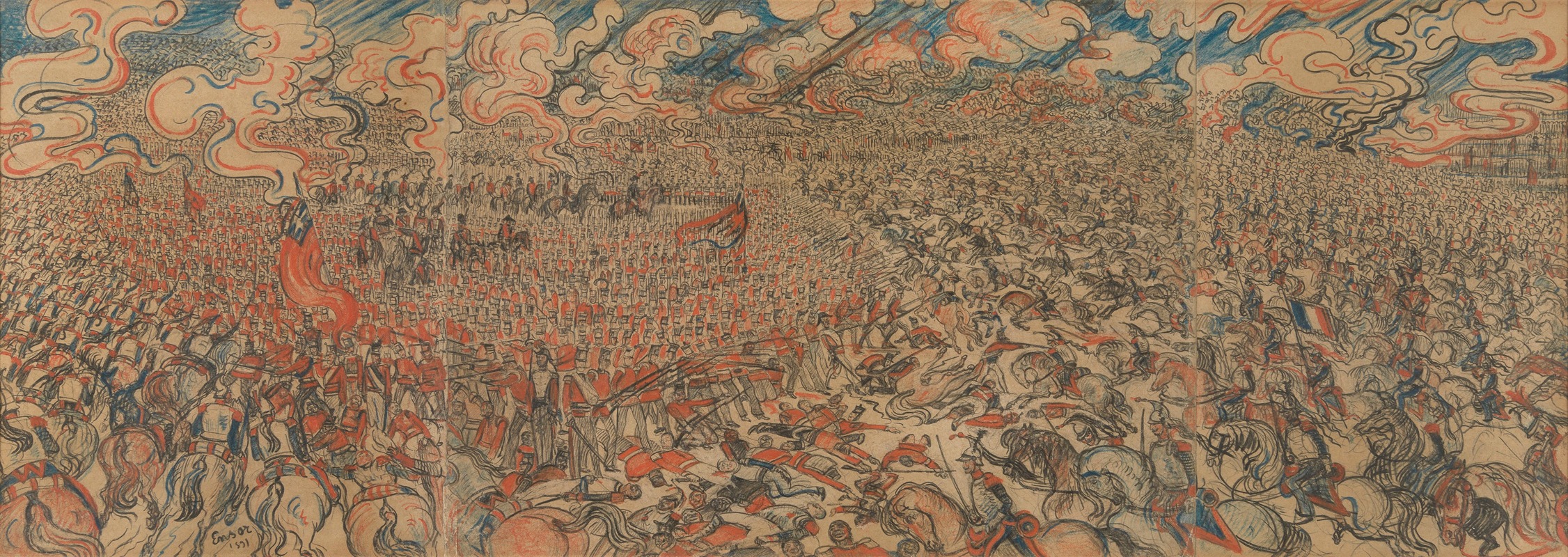
The Cuirassiers at Waterloo
A hand-painted replica of James Ensor’s masterpiece The Cuirassiers at Waterloo, meticulously crafted by professional artists to capture the true essence of the original. Each piece is created with museum-quality canvas and rare mineral pigments, carefully painted by experienced artists with delicate brushstrokes and rich, layered colors to perfectly recreate the texture of the original artwork. Unlike machine-printed reproductions, this hand-painted version brings the painting to life, infused with the artist’s emotions and skill in every stroke. Whether for personal collection or home decoration, it instantly elevates the artistic atmosphere of any space.
"The Cuirassiers at Waterloo" is a painting by the Belgian artist James Ensor, created in 1889. Ensor, known for his unique style that often incorporated elements of satire and the grotesque, was a prominent figure in the Belgian avant-garde movement. His work frequently explored themes of death, masks, and the absurdity of human existence, which were reflective of his critical view of society.
This particular painting, "The Cuirassiers at Waterloo," depicts a scene from the Battle of Waterloo, a significant historical event that took place on June 18, 1815. The battle marked the defeat of Napoleon Bonaparte by the Seventh Coalition, led by the Duke of Wellington and Gebhard Leberecht von Blücher. The cuirassiers were heavy cavalry soldiers known for their armor and played a crucial role in the Napoleonic Wars, including the Battle of Waterloo.
Ensor's depiction of the cuirassiers is notable for its dramatic and somewhat chaotic composition. The painting captures the intensity and tumult of battle, with soldiers and horses intertwined in a dynamic and almost frenetic scene. Ensor's use of color and brushwork contributes to the sense of movement and energy, with bold strokes and a vivid palette that bring the scene to life.
Unlike traditional historical paintings that often aim for realism and detailed accuracy, Ensor's work is more expressive and interpretive. His approach reflects his broader artistic philosophy, which often challenged conventional norms and embraced a more subjective and emotional perspective. This painting, like many of Ensor's works, can be seen as a commentary on the futility and brutality of war, as well as a reflection of the artist's own complex views on human nature and society.
Ensor's choice to depict the Battle of Waterloo, a pivotal moment in European history, may also be seen as a reflection of his interest in historical subjects and their relevance to contemporary issues. The painting does not merely recount a historical event but invites viewers to consider the broader implications of conflict and power.
"The Cuirassiers at Waterloo" is part of Ensor's broader body of work that has been celebrated for its originality and impact on modern art. His influence can be seen in various movements, including Expressionism and Surrealism, and his work continues to be studied and appreciated for its innovative approach and profound thematic depth.
Today, James Ensor is recognized as one of Belgium's most important artists, and his works are held in high regard in museums and collections worldwide. "The Cuirassiers at Waterloo" stands as a testament to his skill and vision, offering a unique and thought-provoking interpretation of a historical moment that continues to resonate with audiences.





